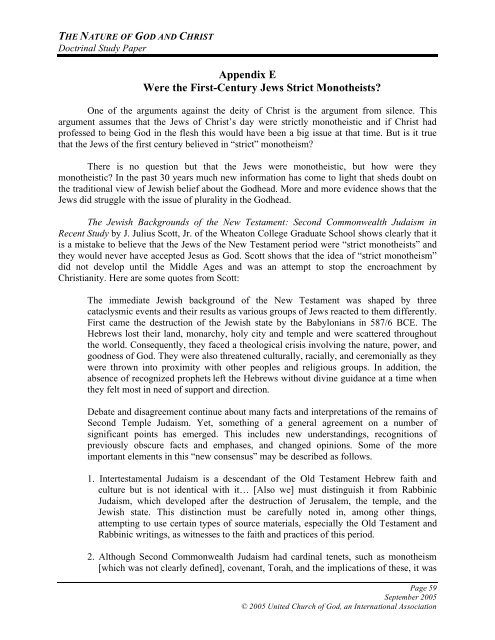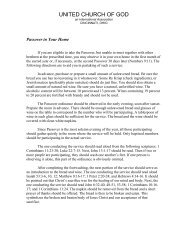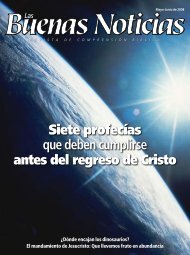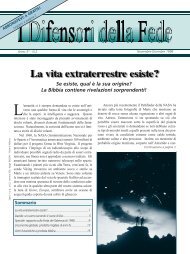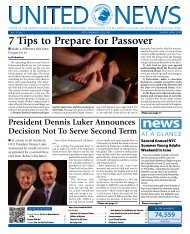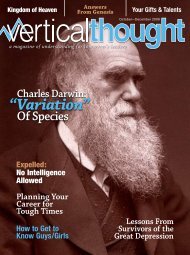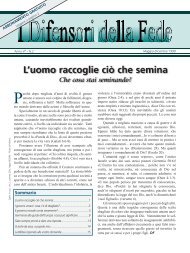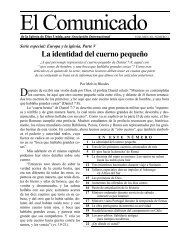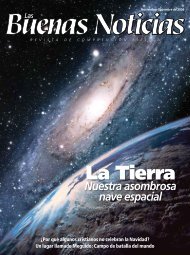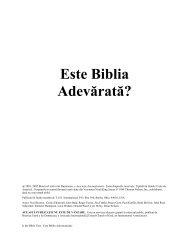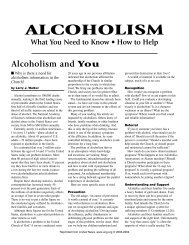The Nature of God and Christ - Members Site - United Church of God
The Nature of God and Christ - Members Site - United Church of God
The Nature of God and Christ - Members Site - United Church of God
- No tags were found...
Create successful ePaper yourself
Turn your PDF publications into a flip-book with our unique Google optimized e-Paper software.
THE NATURE OF GOD AND CHRISTDoctrinal Study PaperAppendix EWere the First-Century Jews Strict Monotheists?One <strong>of</strong> the arguments against the deity <strong>of</strong> <strong>Christ</strong> is the argument from silence. Thisargument assumes that the Jews <strong>of</strong> <strong>Christ</strong>’s day were strictly monotheistic <strong>and</strong> if <strong>Christ</strong> hadpr<strong>of</strong>essed to being <strong>God</strong> in the flesh this would have been a big issue at that time. But is it truethat the Jews <strong>of</strong> the first century believed in “strict” monotheism?<strong>The</strong>re is no question but that the Jews were monotheistic, but how were theymonotheistic? In the past 30 years much new information has come to light that sheds doubt onthe traditional view <strong>of</strong> Jewish belief about the <strong>God</strong>head. More <strong>and</strong> more evidence shows that theJews did struggle with the issue <strong>of</strong> plurality in the <strong>God</strong>head.<strong>The</strong> Jewish Backgrounds <strong>of</strong> the New Testament: Second Commonwealth Judaism inRecent Study by J. Julius Scott, Jr. <strong>of</strong> the Wheaton College Graduate School shows clearly that itis a mistake to believe that the Jews <strong>of</strong> the New Testament period were “strict monotheists” <strong>and</strong>they would never have accepted Jesus as <strong>God</strong>. Scott shows that the idea <strong>of</strong> “strict monotheism”did not develop until the Middle Ages <strong>and</strong> was an attempt to stop the encroachment by<strong>Christ</strong>ianity. Here are some quotes from Scott:<strong>The</strong> immediate Jewish background <strong>of</strong> the New Testament was shaped by threecataclysmic events <strong>and</strong> their results as various groups <strong>of</strong> Jews reacted to them differently.First came the destruction <strong>of</strong> the Jewish state by the Babylonians in 587/6 BCE. <strong>The</strong>Hebrews lost their l<strong>and</strong>, monarchy, holy city <strong>and</strong> temple <strong>and</strong> were scattered throughoutthe world. Consequently, they faced a theological crisis involving the nature, power, <strong>and</strong>goodness <strong>of</strong> <strong>God</strong>. <strong>The</strong>y were also threatened culturally, racially, <strong>and</strong> ceremonially as theywere thrown into proximity with other peoples <strong>and</strong> religious groups. In addition, theabsence <strong>of</strong> recognized prophets left the Hebrews without divine guidance at a time whenthey felt most in need <strong>of</strong> support <strong>and</strong> direction.Debate <strong>and</strong> disagreement continue about many facts <strong>and</strong> interpretations <strong>of</strong> the remains <strong>of</strong>Second Temple Judaism. Yet, something <strong>of</strong> a general agreement on a number <strong>of</strong>significant points has emerged. This includes new underst<strong>and</strong>ings, recognitions <strong>of</strong>previously obscure facts <strong>and</strong> emphases, <strong>and</strong> changed opinions. Some <strong>of</strong> the moreimportant elements in this “new consensus” may be described as follows.1. Intertestamental Judaism is a descendant <strong>of</strong> the Old Testament Hebrew faith <strong>and</strong>culture but is not identical with it… [Also we] must distinguish it from RabbinicJudaism, which developed after the destruction <strong>of</strong> Jerusalem, the temple, <strong>and</strong> theJewish state. This distinction must be carefully noted in, among other things,attempting to use certain types <strong>of</strong> source materials, especially the Old Testament <strong>and</strong>Rabbinic writings, as witnesses to the faith <strong>and</strong> practices <strong>of</strong> this period.2. Although Second Commonwealth Judaism had cardinal tenets, such as monotheism[which was not clearly defined], covenant, Torah, <strong>and</strong> the implications <strong>of</strong> these, it wasPage 59September 2005© 2005 <strong>United</strong> <strong>Church</strong> <strong>of</strong> <strong>God</strong>, an International Association


